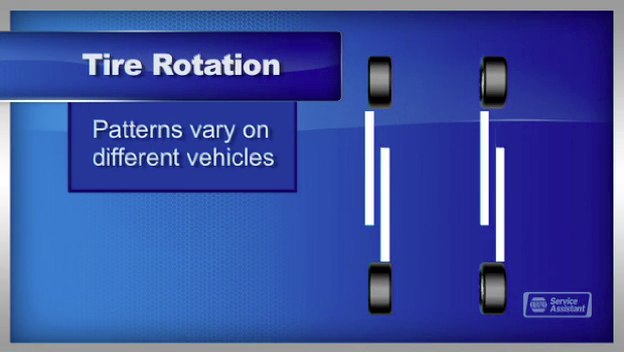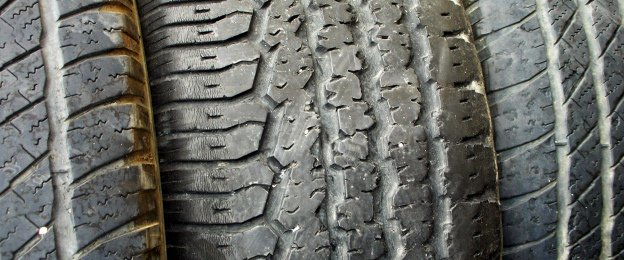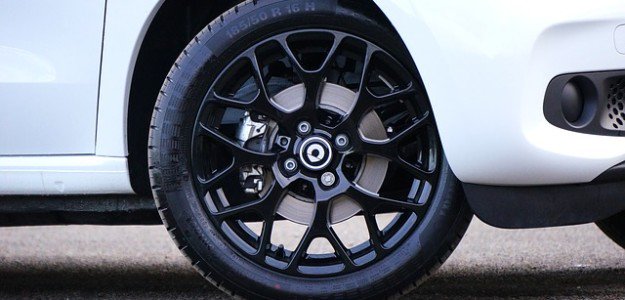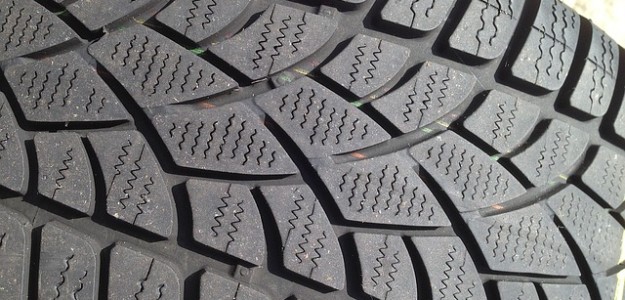Posted on 4/20/2017

Let's talk about making your tires last longer with regular tire rotation and wheel balancing. Let's start with tire rotation. In normal driving, your front tires wear more on the shoulders, because they handle much of the cornering forces in turns. Front-wheel drive vehicles have even more force on the front tires. We rotate the tires so that all the tires do some duty on the front end, as well as getting a little break on the back end. That way all four tires wear more evenly over their life and last longer. You may have heard tires are always rotated front to back. Is that true? For most vehicles, yes. Some manufacturers recommend a cross-rotational pattern that includes the spare tire, and some high-performance vehicles have a different-sized tire on the front and in the rear and may even have unidirectional tires that can only be on the left or right side of the vehicle. Your Elite Service Advisor can help you sort that out and will perform the right tire rotation for your ve ... read more
Posted on 4/20/2017

Your tires are one of the most important parts of your car. If they are in poor condition, at best you may find yourself stranded on the side of the road. At worst, you could have a blowout and end up in a life-threatening accident. That's why it's so important to make certain your tires are well-maintained. Keeping your tires in good condition can also help them last longer. In fact, experts say that you can get as much as 50 percent more life out of your tires if you maintain them properly! Make Certain They Are Properly Inflated It's very important to make certain your tires are properly inflated. If they are under-inflated, they actually create excess heat as they move over the pavement. This can create a blowout or weaken the tires, making them more susceptible to being punctured. Also if your tires are under-inflated, they'll take extra wear and tear. The center tread will wear out more quickly than that on tires that are fully inflated, so you ... read more
Posted on 2/16/2017

Tires are the only part of the vehicle that touches the road, yet consumers hardly pay them any attention, except for when things go wrong. You may have noticed what seems like strange markings or letters on the sides of your tires; but have you ever wondered what they mean? Rather than wait to discover what the symbols and writing on your tires mean, we're here to divulge the mystery! The Writing Serves a Purpose While it may seem as if tire manufactures put those letters and numbers there to confuse you, we assure you it's not the case. Rather, these markings communicate important information to auto repair professionals. Since tire manufacturers can't attach manuals or letters to the tires themselves, they've developed their own language for communicating things like load carrying capacity, the maximum inflation pressures, and max mph; but there's even more to it. A quick glance at the tire and you may notice a large letter prese ... read more
Posted on 11/17/2016

When’s the last time you exchanged your old and worn tires for new ones? Whether your tires are in great or subpar shape, you’ve probably wondered at some point if you could get by on replacing just one or two of your tires. There may be a variety of reasons why you would want to replace only one or two of your tires; whether one is more worn than the other (may indicate alignment issues), or you ran something over you shouldn’t have. Tires are something you don’t want to cut corners on. Why It’s Not A Good Idea While you’re neighborhood car expert may have told you it’s perfectly okay to do if you’re trying to save money, experts warn it may be a terrible, if not deadly mistake. Tire experts warn unless you can remember which tires you replaced and when, you should only replace all four if you can help it. Most of the time, the car owner only remembers to replace two at a time and forgets about the other two ... read more